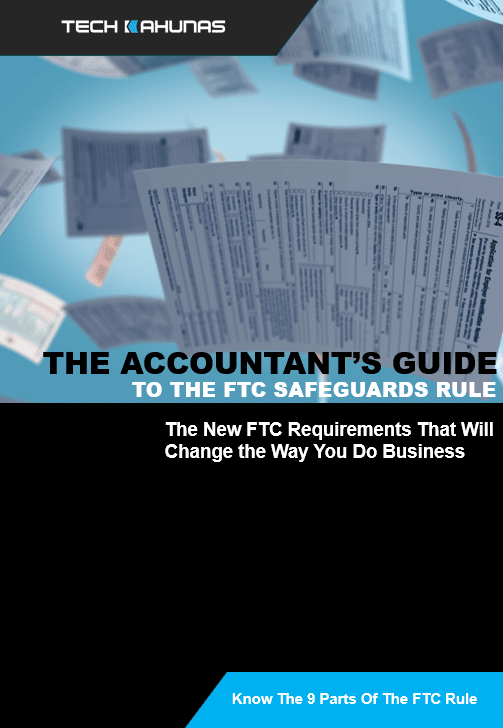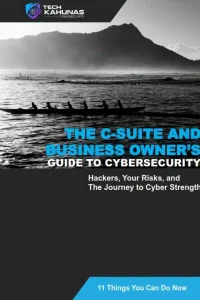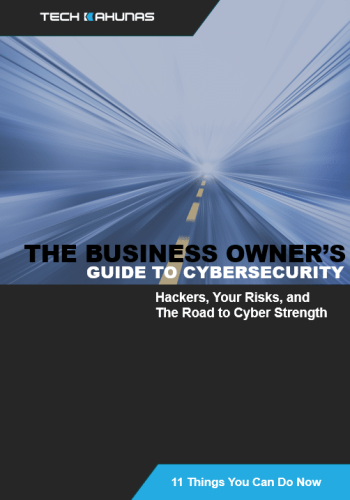As a high net-worth family, you're entrusted with safeguarding your legacy in the digital age. Start by using strong, complex passwords, supported by a reliable password manager, and always activate multi-factor authentication for critical accounts. Regular audits will pinpoint vulnerabilities in your digital footprint, and proactive education guarantees your family recognizes phishing threats. Encrypt all devices and communications to secure sensitive data while managing social media carefully with robust privacy settings. Financial security calls for fraud detection tools and real-time transaction alerts. With a thorough incident response plan and ongoing education, you're poised to uncover even more effective strategies.
Key Takeaways
- Implement multi-factor authentication and complex passwords to secure digital accounts from unauthorized access.
- Conduct regular security audits and digital footprint evaluations to identify vulnerabilities.
- Educate family members on recognizing phishing scams and maintaining online privacy.
- Utilize encryption for device and communication security to protect sensitive information.
- Establish clear incident response protocols and document incidents for future threat assessments.
Understanding Cybersecurity Basics
Understanding cybersecurity basics is vital for safeguarding the digital assets of high net-worth families. You need to navigate the landscape of cybersecurity myths and make sure you're not misled by them. Many believe that wealth alone attracts cyber threats, yet it's often the digital footprint that does. The more extensive your online presence, the more opportunities there are for cybercriminals to exploit vulnerabilities. As a result, debunking myths and recognizing the true nature of risks is essential.
Start by identifying the extent of your digital footprint. Consider every device, online account, and data-sharing platform you or your family uses. Each element of your digital presence needs protection. A common myth is that using strong passwords alone is enough. While important, they're just one layer of a thorough cybersecurity strategy.
Focus on proactive risk assessment and employ multi-factor authentication wherever possible. This simple step greatly reduces the risk of unauthorized access. Implement regular updates and patches for all software and devices to protect against known vulnerabilities.
Identifying Vulnerable Areas
When securing high net-worth families against cyber threats, pinpointing vulnerable areas is crucial. Start by evaluating your family's digital footprint. This involves understanding where your data is stored, who's access, and how it's protected.
Conducting regular security audits and risk assessments will help you identify weak points that could lead to data breaches or identity theft.
Consider these common vulnerabilities:
- Phishing Scams: These deceptive tactics trick you into revealing personal information. Educate your family to recognize such scams.
- Online Privacy: Confirm settings on social media and online accounts limit exposure to unwanted attention.
- Insider Threats: Sometimes, risks come from within. Keep an eye on who's access to sensitive information.
- Malware Protection: Without robust malware protection, devices are susceptible to attacks. Install reputable antivirus software.
- Cyber Insurance: Evaluate your coverage to verify it addresses potential cyber threats your family might face.
Taking these steps can greatly improve your family's cybersecurity posture. It's crucial to maintain vigilance and adapt to new threats as they emerge.
Implementing Strong Passwords
In today's digital age, securing your family's assets starts with implementing strong passwords. Weak passwords are a significant vulnerability, making it vital to follow password complexity guidelines. Use a combination of uppercase, lowercase, numbers, and symbols to create a robust password that's at least 12 characters long. Avoid using easily guessable information like birthdays or common words.
Consider the benefits of a password manager to streamline the process. A password manager securely stores and generates complex passwords, reducing the risk of breaches. It eliminates the need to remember multiple passwords, allowing you to focus on safeguarding your digital assets effectively.
| Password Security Aspect | Recommendation |
|---|---|
| Minimum Length | At least 12 characters |
| Composition | Mix of letters, numbers, symbols |
| Storage Solution | Use a password manager |
Without a password manager, you risk using repetitive or weak passwords, which hackers can exploit. By implementing these strategies, you enhance your family's cybersecurity posture, minimizing potential risks. Remember, the cost of a breach far outweighs the investment in proper password management. Prioritize this critical step to guarantee your family's legacy remains protected in an ever-evolving digital landscape.
Utilizing Two-Factor Authentication
To enhance your account security and prevent unauthorized access, you should implement two-factor authentication (2FA) as a critical layer of defense.
This method requires not just a password, but also a second form of verification, such as a code sent to your mobile device.
Enhancing Account Security
Two-factor authentication (2FA) stands as a critical safeguard in enhancing account security for high net-worth families. By requiring a second form of verification, you greatly reduce the risk of unauthorized access, identity theft, and data breaches.
Here's how you can fortify your digital presence:
- Biometric Authentication: Use fingerprint or facial recognition for an extra layer of security that's difficult to replicate.
- Security Audits: Regularly evaluate your systems and practices to identify vulnerabilities in your digital footprint.
- Software Updates: Keep all devices and applications updated to patch security gaps and protect against emerging threats.
- Phishing Awareness: Educate family members about recognizing phishing attempts to prevent breaches through deceptive emails or messages.
- Secure Backups: Verify that critical data is backed up securely, leveraging cloud security measures to prevent loss or unauthorized access.
Implementing 2FA complements these measures by adding an essential line of defense.
Privacy settings should be reviewed regularly, especially when using family sharing features. By integrating 2FA with existing security protocols, you create a resilient barrier against cyber threats, thereby safeguarding your legacy.
Always remain vigilant and proactive in enhancing your account security, adjusting strategies as new risks emerge.
Preventing Unauthorized Access
Securing your family's digital assets hinges on preventing unauthorized access, and leveraging two-factor authentication (2FA) is an essential strategy in this endeavor. By combining something you know (like a password) with something you have (such as a smartphone) or something you are (biometric authentication), 2FA markedly fortifies access control mechanisms. This additional layer acts as a barrier against cyber threats that target high net-worth families.
Consider this comparison to understand the effectiveness of 2FA:
| Factor Type | Security Level |
|---|---|
| Password Only | Low |
| Password + SMS Code | Medium |
| Password + Authenticator App | High |
| Password + Biometric Authentication | Very High |
| Password + Physical Token | Very High |
When implementing 2FA, prioritize using biometric authentication like fingerprint or facial recognition, as they provide robust access control. They're difficult to replicate, adding an unyielding layer of security. For enhanced protection, encourage family members to utilize authenticator apps over SMS codes, as these are less vulnerable to interception.
Assess the risks and choose the appropriate combination for each account. By adopting 2FA, you proactively safeguard your family's digital legacy, ensuring that sensitive information and assets remain secure from unauthorized access.
Securing Financial Accounts
Protecting your financial accounts is a crucial aspect of cybersecurity for high net-worth families, as these accounts are prime targets for cybercriminals seeking to exploit vulnerabilities. To safeguard your wealth, you must employ robust measures that offer both protection and peace of mind.
Begin with thorough account monitoring to detect suspicious activities early. Educate yourself and your family in financial literacy to understand and manage risks effectively. Your digital estate should be organized and secure, guaranteeing that investment security is maintained at all times.
Consider implementing the following strategies:
- Fraud Detection: Use sophisticated tools and services that alert you to fraudulent activities.
- Identity Theft Protection: Regularly update passwords and utilize multi-factor authentication for online banking.
- Transaction Alerts: Set up alerts for transactions to monitor unauthorized access in real-time.
- Asset Protection: Diversify your assets across multiple accounts to minimize risk.
- Wealth Management Services: Consult with professionals who can provide tailored advice and solutions.
These proactive measures will enhance the security of your financial accounts, mitigating risks associated with cyber threats.
Protecting Personal Devices
To effectively protect your personal devices, focus on two critical areas: device encryption and secure password practices.
Encryption guarantees that even if a device is lost or stolen, unauthorized access to your sensitive information is prevented.
Complement this by using strong, unique passwords for each device and enabling two-factor authentication to add an extra layer of security.
Device Encryption Importance
Amid the complexities of digital life, encrypting personal devices stands as a crucial safeguard for high net-worth families. By encrypting your devices, you guarantee that your sensitive information remains secure even if your device falls into the wrong hands. This proactive measure integrates seamlessly into your data protection strategies, creating a robust defense against data breaches.
When evaluating device encryption, consider the following:
- Data Sensitivity: Analyze the sensitivity of the stored information; encryption is fundamental if personal, financial, or business data is involved.
- Encryption Software Options: Choose reliable encryption software that meets your specific needs, such as BitLocker for Windows or FileVault for Mac.
- Device Compatibility: Confirm that the encryption software is compatible with your devices, including laptops, tablets, and smartphones.
- User Experience: Opt for solutions that balance security with ease of use, avoiding overly complex systems that could hinder daily operations.
- Compliance Requirements: Stay informed about legal and industry-specific regulations that may necessitate encryption.
Incorporating encryption into your cybersecurity framework mitigates risks and preserves your legacy.
Failure to encrypt leaves your data vulnerable, potentially leading to financial loss or reputational damage.
Don't overlook this crucial step; encryption is a cornerstone of modern data protection.
Secure Password Practices
While encrypting your devices lays a solid foundation for data security, adopting secure password practices further strengthens your defense strategy. You need to manage passwords effectively to safeguard your personal devices and sensitive information.
Start by using a password manager to generate and store complex, unique passwords for every account. This tool not only helps in maintaining strong passwords but also reduces the risk of reusing passwords across multiple platforms, which is a common vulnerability.
In addition to password managers, biometric authentication offers an extra layer of security. By using fingerprints or facial recognition, you guarantee that only authorized individuals can access your devices. This method isn't only more secure but also convenient, reducing the need to remember multiple passwords.
However, it's vital to keep your biometric data secure, as it's just as valuable as any password. Regularly update your passwords and monitor for any unauthorized access. Implement multi-factor authentication wherever possible to add another security layer.
Encrypting Sensitive Communications
In today's interconnected world, encrypting sensitive communications is paramount for high net-worth families aiming to protect their private information from cyber threats.
By using secure messaging and encryption tools, you can guarantee that your communication protocols uphold data confidentiality. Here's how you can enhance your message integrity and information protection:
- Adopt end-to-end encryption: This guarantees your messages remain confidential from sender to receiver, preventing unauthorized access.
- Utilize digital signatures: Authenticate the origin of messages and verify that they haven't been altered, preserving message integrity.
- Implement secure channels: Use encrypted communication platforms that offer robust security measures for your sensitive conversations.
- Adjust privacy settings: Regularly review and update the privacy settings on your communication tools to maintain ideal data confidentiality.
- Select encryption tools wisely: Choose reputable encryption solutions that align with your family's specific needs and threat model.
Managing Social Media Risks
Managing social media risks is essential for high net-worth families looking to safeguard their digital footprint. With your family's online presence, maintaining social media privacy and protecting your online reputation are paramount.
Begin by conducting a thorough audit of your family's profiles. Identify potential vulnerabilities such as public personal information, location check-ins, and exposed connections.
Once you've identified these risks, implement robust privacy settings across platforms. Limit profile visibility to trusted connections and regularly update these settings as platforms evolve. Consider using pseudonyms for personal accounts to add an extra layer of privacy.
In addition to privacy settings, monitor your family's online reputation by setting up alerts for mentions of your family name. This proactive approach allows you to address any negative content or misinformation promptly.
Utilize professional services to manage and clean up your online presence if necessary.
Educating Family Members
Empower your family members with the knowledge and skills they need to navigate the digital world securely. Start by incorporating family training sessions into your routine to enhance everyone's digital literacy.
Organize cybersecurity workshops to cover the basics of online privacy and safe browsing. These sessions can provide practical, hands-on experience, making complex topics more understandable.
Regular family meetings should include security discussions to keep everyone informed about the latest cyber threats. Encourage open dialogue to address any concerns and foster a culture of threat awareness.
Consider the following steps:
- Schedule cybersecurity workshops: Develop a curriculum on essential topics like online privacy and safe browsing.
- Conduct family meetings: Use these as opportunities for security discussions and updates on potential risks.
- Implement emergency drills: Practice responses to digital threats to guarantee everyone knows their role.
- Promote digital literacy: Teach family members about responsible technology use and recognizing phishing attempts.
- Discuss threat awareness: Share information on current cybersecurity trends and vulnerabilities.
Make certain everyone understands the importance of adhering to security protocols, and emphasize the need for vigilance in technology use.
Planning Incident Response
When planning your incident response, establish clear protocols to guarantee swift and effective action during a cybersecurity threat.
Designate specific incident teams with defined roles and responsibilities to manage and mitigate risks efficiently.
Establish Response Protocols
Establishing robust response protocols is crucial for high net-worth families to effectively mitigate the risks associated with cybersecurity incidents. By preparing in advance, you can greatly reduce the impact of potential crises.
Start by developing a thorough crisis management plan that outlines specific steps to take when a cybersecurity threat occurs. This guarantees that everyone involved knows their roles and responsibilities during an incident.
Effective communication strategies are critical for managing a cybersecurity event. Confirm that you have clear channels for internal and external communication. This helps maintain transparency, manage stakeholder expectations, and minimize reputational damage.
Consider incorporating the following elements into your response protocols:
- Risk Assessment: Regularly evaluate potential threats to understand their impact and likelihood.
- Notification Procedures: Establish clear guidelines for who should be informed and how information should be relayed.
- Data Recovery Plans: Prepare strategies for restoring data and systems to minimize downtime.
- Legal and Compliance Requirements: Verify all actions adhere to applicable laws and regulations.
- Continuous Improvement: After each incident, review the response to identify lessons learned and update protocols accordingly.
Designate Incident Teams
Having established robust response protocols, it's essential to appoint dedicated incident response teams to enhance your family's cybersecurity defenses.
Start by defining clear team roles to guarantee each member knows their responsibilities during an incident response. Conduct a thorough threat assessment to identify potential risks and vulnerabilities, allowing your team to focus on the most significant threats.
Effective communication strategies are imperative. Develop channels for quick and secure communication among team members and stakeholders. This guarantees everyone stays informed and can act swiftly during an incident.
Regular training exercises are crucial for keeping the team prepared and familiar with escalation procedures, ensuring a swift response when an incident occurs.
Implement extensive recovery plans that outline the steps needed to restore systems and data. This includes risk management practices to minimize future threats. Engage stakeholders to keep them informed of progress and decisions, fostering trust and cooperation.
Document every phase of an incident meticulously. Incident documentation will provide valuable insights for future threat assessments and help refine existing protocols.
Frequently Asked Questions
How Can High Net-Worth Individuals Protect Their Smart Home Devices From Cyber Threats?
You should enhance smart device security by using strong passwords and regularly updating firmware. Implement network segmentation to isolate devices, reducing vulnerability. Conduct regular risk assessments to identify potential threats and take immediate action to secure your network.
What Steps Can Be Taken to Secure Family Travel Itineraries and Private Jet Information?
When securing your travel plans, don't let the cat out of the bag. Encrypt your itinerary to prevent leaks, and restrict jet access to trusted personnel only. Regularly assess risks to guarantee your private information stays under wraps.
How Do You Prevent Identity Theft When Purchasing Luxury Items Online?
Guarantee online payment security by using secure payment gateways and enabling two-factor authentication. Verify luxury item authenticity through reputable sellers. Regularly monitor accounts for suspicious activity to promptly address potential threats and prevent identity theft.
What Measures Should Be Taken to Secure Family-Owned Businesses From Cyber Attacks?
You should implement thorough employee training and use robust data encryption to secure your family-owned business. Regularly assess risks and update security protocols, ensuring employees understand potential threats and the importance of protecting sensitive information.
How Can Personal Assistants of High Net-Worth Families Ensure Cybersecurity Compliance?
Think of your role as a modern-day guardian of secrets. You conduct security training and perform regular risk assessments. Stay proactive, update protocols, and guarantee compliance to protect the family's digital domain from potential threats.
Conclusion
Securing your family's legacy is like fortifying a castle; every access point matters. By understanding cybersecurity basics, identifying vulnerabilities, and implementing solutions like strong passwords and two-factor authentication, you're safeguarding your wealth. Encrypt sensitive communications and secure financial accounts to fend off potential breaches. Educate family members about social media risks and prepare an incident response plan. Proactively evaluating risks and deploying these strategies guarantees your family's future remains protected against cyber threats.



 Get your CPA firm aquainted with new FTC rules.
Get your CPA firm aquainted with new FTC rules. 




